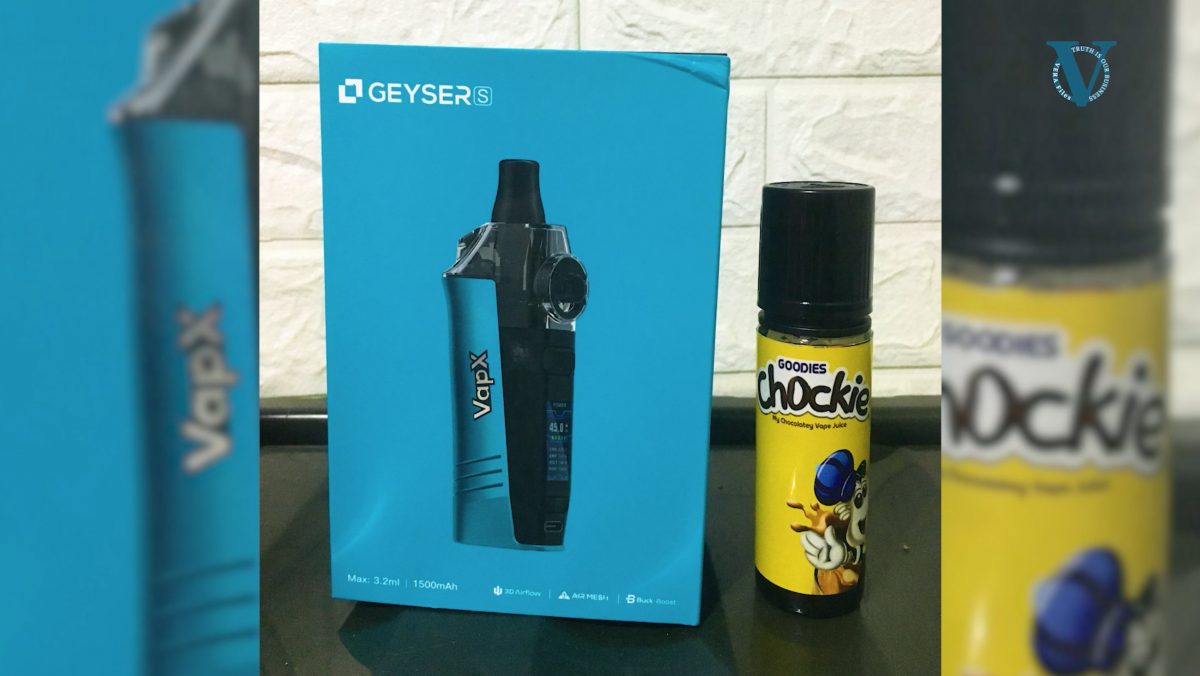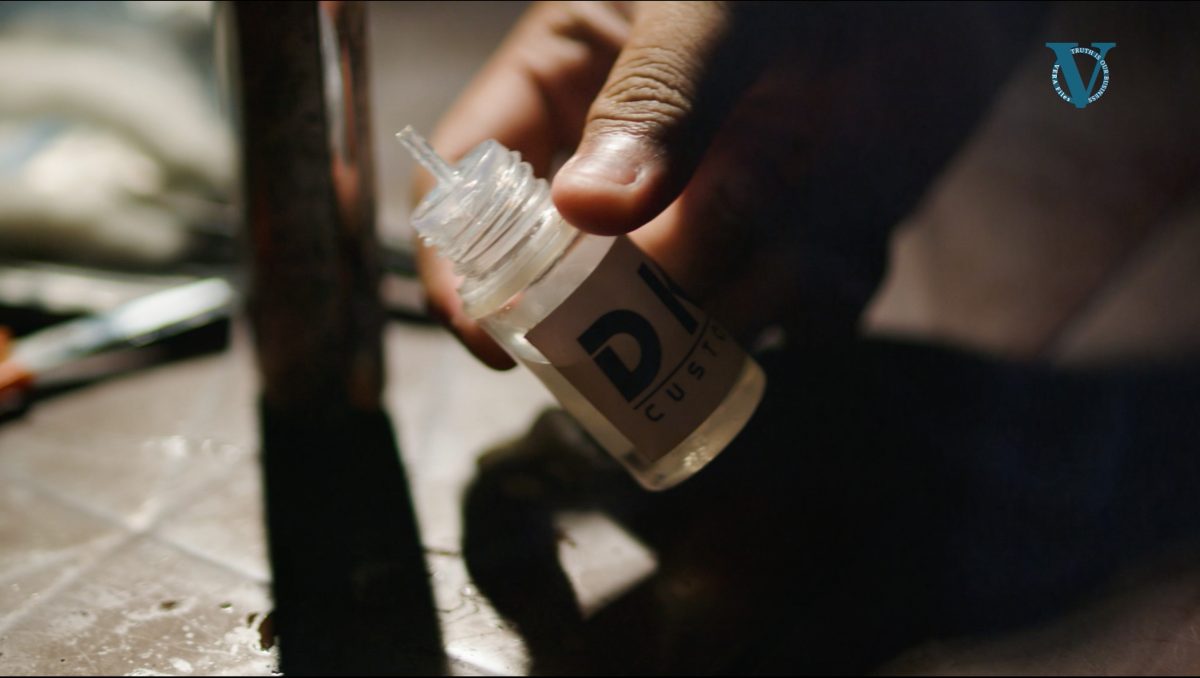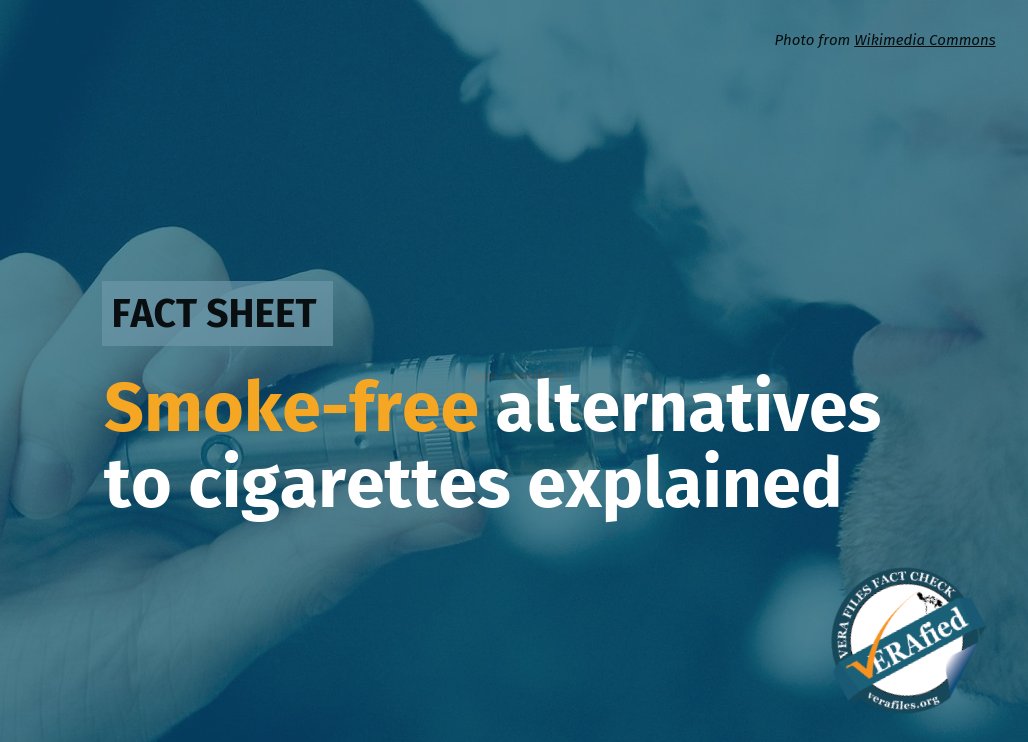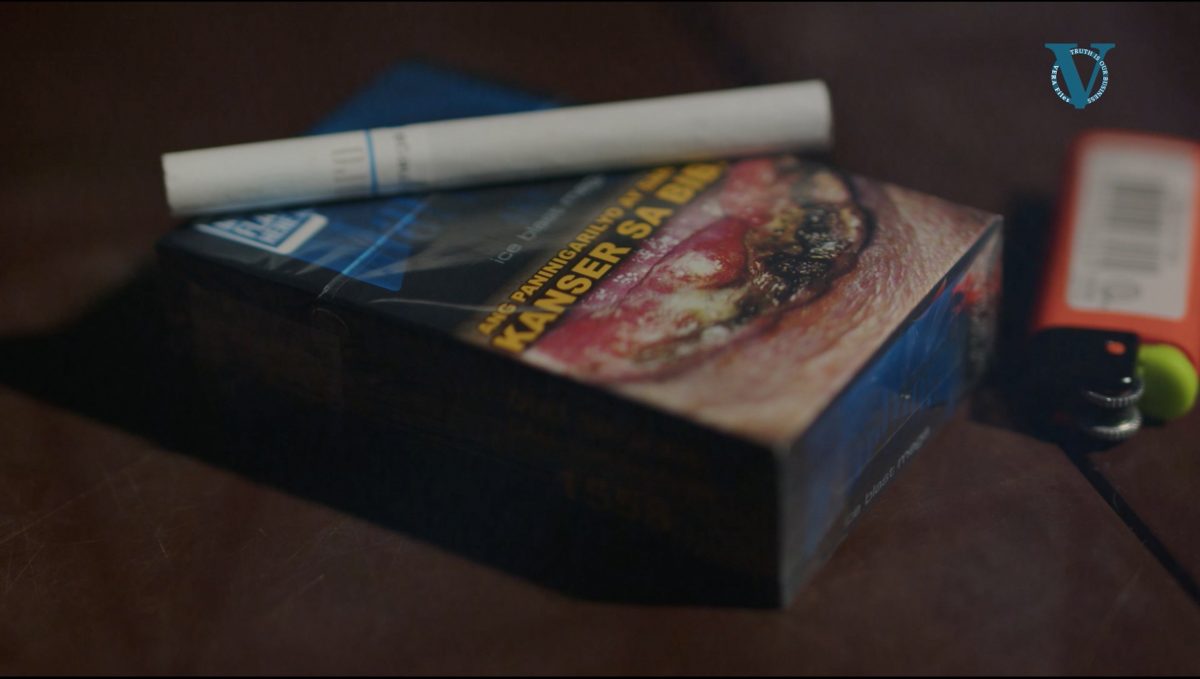Disregarding the government’s tobacco control program, Congress has ratified a bill that allows younger people to buy and use electronic cigarettes (e-cigarettes) and heated tobacco products (HTPs).
The proposed Vaporized Nicotine and Non-Nicotine Products Regulation Act, now awaiting action from President Rodrigo Duterte, lowers from 21 to 18 years old the minimum age who can access these smoke-free cigarette alternative products.
The measure defies persistent calls from medical practitioners and health advocates to raise the minimum age of access from 21 to 25 years old, as well as Duterte’s strong position against tobacco smoking and vaping.
The key features of the pending legislation reverse the policies laid down in Republic Act (RA) 11467, which Duterte enacted in January 2020, and Executive Order (EO) No. 106 issued a month later.
In a Feb. 11 memorandum to the president, the Department of Health (DOH) warned that the bill, if enacted, “would allow even high school students to buy the products in retail establishments, including within malls.”
“Given the health harms of vape use and the alarmingly increasing rate of vape use among the youth, the DOH, together with the FDA (Food and Drug Administration), DepEd (Department of Education) and DOF (Department of Finance), strongly recommends to retain the age restriction of 21 years old as presently stipulated in RA No. 11467 and EO No. 106 s. 2020 in order to protect the youth from the harmful effects of vapor products and HTPs,” part of the DOH memorandum said.
The DepEd, in a statement read during a March 17 webinar by Dr. Ma. Corazon Dumlao, chief of the Bureau of Learners Support Service – School Health Division, said at least 870,000 high school students who are 18 years old and 1.1 million others in senior high school who are between 18 and 20 years old would “become legally allowed to be marketed the harmful products” if the vape bill becomes law.
“We teach in schools how the part of the brain that is responsible for rational decisions does not fully develop until one is in their mid-20s. Before that age, young people are very vulnerable to engaging in risky behaviors such as substance use and abuse,” she said. “If there will be any attempt to amend existing laws, it should be to increase the age of access to harmful products, not lower it.”
DOH, DepEd,DOF call to Veto… by VERA Files
The Global Youth Tobacco Survey, conducted by the Epidemiology Bureau of the DOH with support from health organizations, showed that while the number of cigarette smokers aged 13 to 15 years declined from 12% in 2015 to 10% in 2019, those using e-cigarettes increased from 11% to 14% during the same period.
In November 2019, the country reported its first case of E-cigarette or Vape-Associated Lung Injury (EVALI) involving a 16-year-old dual-user in the Visayas. A dual user puffs both e-cigarettes and combustible tobacco.
The pending bill not only lowers the age of access but also removes the two-flavor limit on electronic juices used in vaping. It likewise transfers regulation over these products from the FDA to the Department of Trade and Industry (DTI).
Flavors that appeal to the youth, especially if these include a reference to a fruit, candy brand, dessert or to a cartoon character, are prohibited in the ratified vape bill.
Dr. Rizalina Gonzalez, chair of the Tobacco Control Committee in the Philippine Pediatric Society (PPS), described as “outrageous and dangerous to children” the claim of the vape bill proponents that it will protect minors.
“The vape bill will harm children and young people because it will give them easy access to these harmful products,” Gonzalez said during the webinar hosted by ImagineLaw, a nonprofit public interest law association. “It will also allow flavorings, even those that entice young non-smokers to try these products,” she added. (READ: Sidebar on flavors)
Senate president pro tempore Ralph Recto, the bill’s main proponent, argued that these products should be available to 18-year-olds and above since it is the mark of legal age.
“Based on current law, today, you can drink alcohol; you can vote at 18. You can go to war; you can smoke cigarettes at 18 – the age of majority – so I think it’s only practical… at 18 you can use [a vaporized nicotine product], which is less harmful than a tobacco product,” Recto asserted during a Senate session on Aug. 24.
Health experts, however, are not convinced.
“It was really for adults, they claim. But a large part of [vape users] are still the youth,” Gonzalez notes during an interview with VERA Files.
The United States’ Department of Health and Human Services said in a 2016 report that e-cigarette use among the youth has increased in recent years “at an alarming rate.”
“E-cigarette use among U.S. youth and young adults is now a major public health concern. E-cigarette use has increased considerably in recent years, growing an astounding 900% among high school students from 2011 to 2015,” Surgeon General Vivek H. Murthy said in the report’s preface.
In an online forum on COVID-19 and tobacco, Gonzalez says “smoking is a pediatric disease.” She adds that many of the smokers start smoking before the age of 18, citing curiosity and peer pressure among the top reasons.
She asserts that nicotine, which can be found in both tobacco and vape products, is especially troubling for adolescents.
In a 2019 explainer on alternative novel products, published by the U.S.-based tobacco company Philip Morris International, HTPs and most e-cigarettes still contain nicotine.
The addictive drug nicotine “is naturally present” in HTPs, which are made from tobacco leaves, while nicotine in e-cigarettes are “added to the e-liquid,” it said.
“Nicotine in itself in any form is still nicotine. It acts and uses the same pathway of the brain. So, repeated use of nicotine creates the pathway of addiction because of its pleasurable effect,” says Gonzalez, citing that top reasons young people are enticed to try using vapes and HTPs are experimentation and pleasurable experience.
The brain keeps developing until about age 25, according to the U.S. Center for Disease Control and Prevention.
“Using nicotine in adolescence can harm the parts of the brain that control attention, learning, mood, and impulse control,” it said.
(Read VERA FILES FACT SHEET: What lowering age restrictions on e-cigarette smoking means for the youth)
Gonzalez adds that when one of the brain’s nicotine receptors is activated, more nicotine receptors will be activated with continued use, which could result in worse effects of withdrawal.
“With e-cigarettes unregulated, we are contributing [to problems in mental health] because [children and adolescents] are very impulsive, they will get that for a quick release so we are not helping,” she says.
During a Sept. 13 session of the Senate, Recto said the bill does not encourage anyone to vape, but to have an alternative to traditional smoking.
To ensure that only adults will be able to buy or sell these products, IDs such as the national ID, passport or driver’s license should be presented to verify age, he said.
Dr. Ulysses Dorotheo, executive director of the Southeast Asia Tobacco Control Alliance, disapproves of this measure, agreeing that while the bill supposedly has several safeguards to prevent the young from consuming these products, these are not realistic to enforce.
(Read Vape bill exposes young ‘vulnerable’ consumers to health risks, endangers already weak enforcement)
“When you’re below 18, you supposedly can’t access those websites, but… many teenagers access, even if they’re below 13. So there’s no safe way of doing it, unless you have a person who will actually say ‘turn on your video cam and then I’ll look at you, then show me your ID.’ But there’s nothing like that,” he points out.
Rodley Carza, head of the Policy and Technology Section of the DOH’s Health Promotion Bureau, says in an email interview with VERA Files, “the higher the age we delay smoking or vaping initiation, the better.”
“But even beyond the age of 25 years, we have to remember that these products are still harmful and addictive. So we really have to restrict access to these products and one strategy in doing that is increasing the minimum age for smoking and vaping, which is 18 and 21 years old respectively,” he adds.
RA 9211, also known as the Tobacco Regulation Act of 2003, allows the use of tobacco only to those 18 years old and above.
Muntinlupa Rep. Rozzano Rufino Biazon, one of its authors, says the law is being used to justify the lowering of the minimum age of access.
“[Some legislators] want to bring it back [to 18] because it wouldn’t be fair to vape products if tobacco products set lower age limits. But I said no. The age limit for tobacco products should be increased,” he says in an interview with VERA Files.
During the Dec. 16, 2019 discussion on SB 1074, which later became RA 11467, Sen. Francis Tolentino suggested raising the minimum age of access from 21 to 25. “For vaping products, I agree that 25 years old should be the reckoning age,” he said, citing the Family Code and medical studies on nicotine’s effect on brain development.
Article 15 of the Family Code mentioned that parental advice is required for those aged 21 to 25 to get married.
The suggestion to raise the age to 25 was then accepted, but Senate Majority Floor Leader Juan Miguel Zubiri moved for reconsideration, saying it would be an insult to those below 25 to be considered that they are “not mentally adapted” enough to smoke. Eleven senators voted against Tolentino’s proposal.
But when the bill was presented for voting on third and final reading, Tolentino did not oppose any of the provisions, including the lowering of the age of access from 21 to 18 years old.
(Read Senate OKs vape bill despite health concerns amid the pandemic)
Only Sen. Pia Cayetano consistently voted against the bill, arguing that the proposals to raise the age of access is “a means to deter the young people from adopting this habit.”
Based on the results of a recent survey, Congress’ approval of the vape bill does not sit well with the public.
(READ: Sidebar on legislators’ votes)
The Pulse Asia survey from Sept. 6 to 11 showed that over half of its 1,200 respondents support the ban on accessibility of vapes to those aged 21 and below.
Nearly eight out of 10 of those surveyed saw vaping as a “serious health hazard,” and around 74% favor “100% e-cigarette or vapor-free policy” in public places.
It is now up to Duterte, who has been vocal in the fight against illegal drugs, smoking and vaping, on whether to sign the bill into law, allow it to lapse into law after 30 days from receipt of the enrolled bill from Congress, or veto it.
“The veto of the vape bill will actually strengthen tobacco control in the country and protect the health of FIlipinos for generations to come,” Carza adds.
This story is part of the project Seeing Through the Smoke, which is supported by a grant from the International Union of Tuberculosis and Lung Disease (The Union) on behalf of STOP, a global tobacco industry watchdog.




